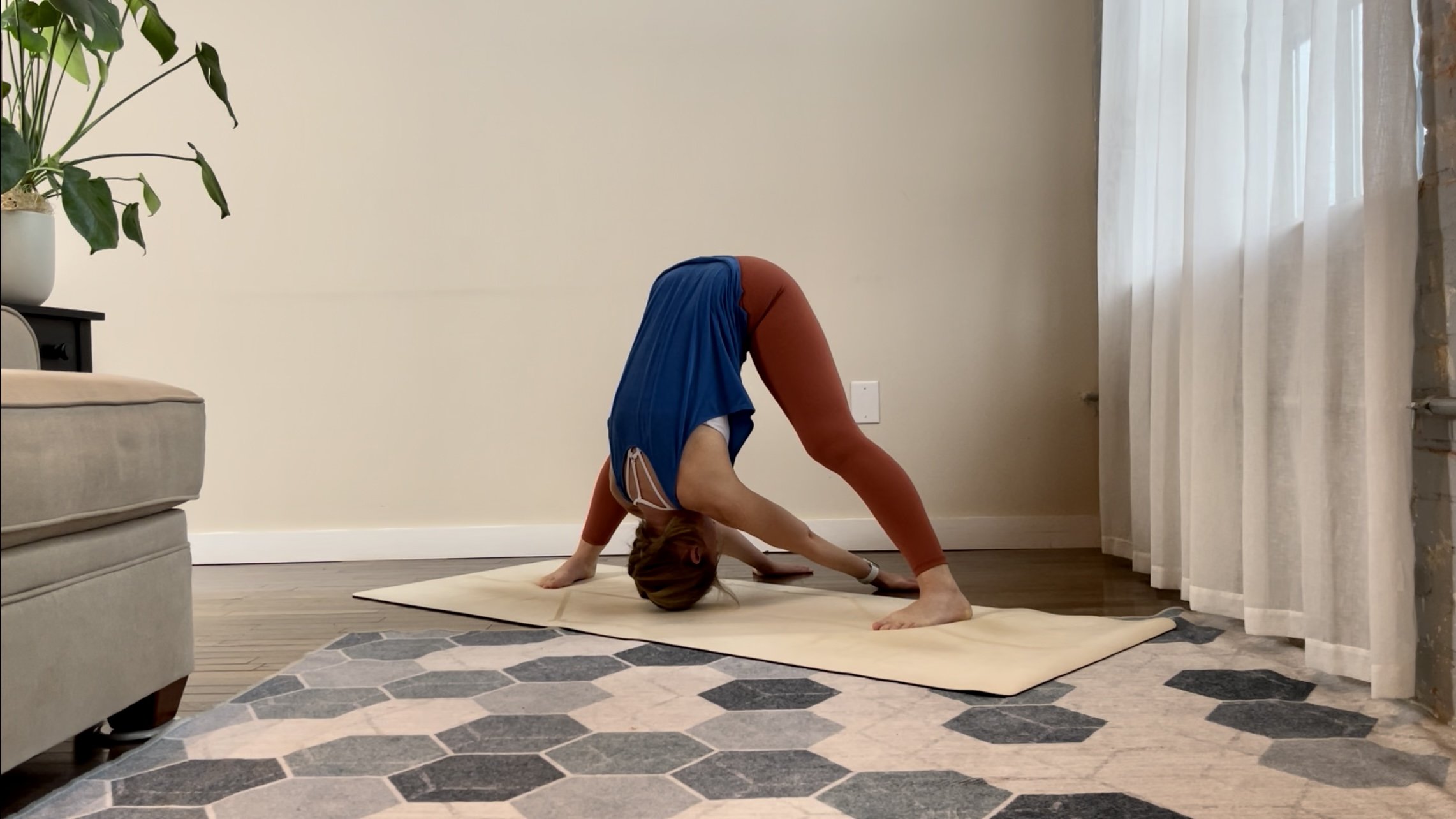Six Grounding Yoga Poses that Encourage Pratyahara
What is Pratyahara?
Pratyahara is a Sanskrit word that refers to the fifth limb of the eight limbs of yoga, as described in the Yoga Sutras of Patanjali. It is often translated as "sense withdrawal" or "sense control." Pratyahara is the practice of withdrawing the senses from external objects and focusing inward, in order to gain control over the mind and cultivate inner awareness. It is considered an important step in the process of concentration and meditation, and is said to lead to a greater sense of peace and clarity.
The Benefits of Turning Your Focus Inward
Pratyahara is believed to have a number of benefits, both physical and psychological. Some of the potential benefits of practicing pratyahara include:
Improved concentration and focus – By withdrawing the senses from external stimuli, pratyahara can help to calm the mind and improve focus.
Greater self-awareness – Pratyahara is a practice of turning inward, which can help to increase self-awareness and introspection.
Increased sense of calm and peace – By reducing the influence of external distractions, pratyahara can help to create a sense of inner peace and calm.
Better control over the mind – By practicing pratyahara, one may be able to gain greater control over the mind and its reactions to external stimuli.
Improved overall physical and mental well-being – The benefits of pratyahara may extend to overall physical and mental well-being, as it can help to reduce stress and improve overall mental and emotional balance.
Six Yoga Poses that Encourage Pratyahara
Crocodile Pose
Begin by lying on your stomach with your legs extended behind you. Place your hands on the ground in front of your chest, with your elbows bent and your forearms resting on the ground. Relax your forehead on your hands. Close your eyes and focus on your breath, allowing your body to sink into the ground.
Standing Wide Leg Forward Fold Pose
Begin by standing with your feet wide apart and parallel. Hinge forward at the hips, keeping your back flat as you lower your torso towards the ground. You can place your hands on the ground in front of you or on blocks. Keep your neck relaxed as you hold the pose.
Child’s Pose
Begin by kneeling on the ground with your knees hip-width apart and your toes touching. Sit your hips towards your heels. Slowly lower your chest towards the ground, extending your arms out in front of you. Rest your forearms on the ground, and your forehead on a block or the ground. Allow your body to relax.
Seated Forward Fold Pose
Begin by sitting on the ground with your legs extended out in front of you. Sit up tall, engaging your core. Slowly hinge forward at the hips, reaching your hands towards your feet as you lower your chest towards the ground. You can place your hands on your thighs, shins, or feet. Keep your back flat and your neck relaxed.
Puppy Pose
Begin on all fours, with your wrists under your shoulders and your knees under your hips. Walk your hands forward, keeping your arms straight and your hips over your knees. Lower your chest towards the ground, allowing your forehead to rest on the ground or a block. Keep your arms straight and allow your upper body to relax as you hold the pose.
Corpse Pose
Begin by lying on your back with your legs extended and your arms by your sides. Let your feet fall out to the sides and your arms to relax away from your body. Close your eyes and focus on your breath, letting go of any thoughts or distractions. Allow your body to sink into the ground and completely relax as you hold the pose.
It's important to note that any yoga pose can be used to encourage pratyahara, as the practice is more about withdrawing the senses and focusing inward, rather than the physical position of the body.






